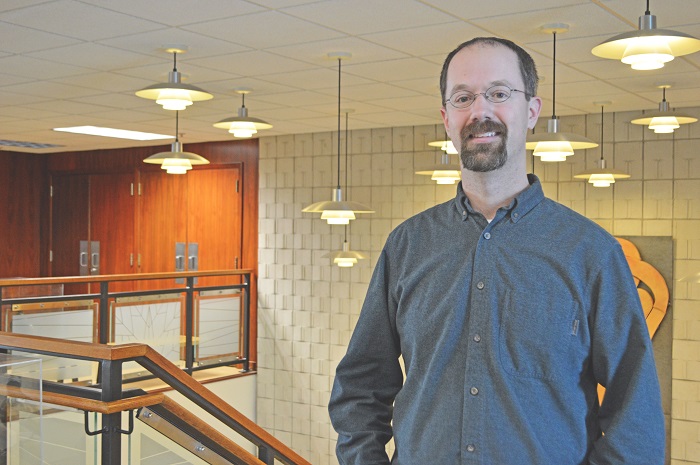
Aaron Young, survey geologist, will present "Monitoring Groundwater Levels in Nebraska: Trends in Statewide Rises, Declines, and the Impact of Recent Drought" at 3:30 p.m., Feb. 25 in the Hardin Hall auditorium (room 107). The seminar is free and open to the public. It is presented as part of the water seminar series.
In Nebraska, our water resources are indeed vast. However, they are not infinite — a notion that was illustrated by the many economic and physical impacts resulting from the drought of 2012. Of the total volume of water stored in the High Plains Aquifer, nearly 60 percent is stored beneath the state of Nebraska. In recent decades, irrigation and groundwater have become directly linked to our thriving agricultural economy.
As more pressure is placed on available groundwater resources, the value of groundwater monitoring and conservation practices becomes more apparent. Groundwater level monitoring began in Nebraska in 1930 to protect and preserve our vast resource for future generations. Today, with the help of various state and federal cooperating agencies, about 5,500 wells are measured statewide on an annual basis, forming one of the nation's largest statewide groundwater level monitoring programs. From these annual measurements, we have amassed nearly 750,000 individual water level readings, from which yearly water level reports are generated. The annual reports discuss regional trends in groundwater level rises and declines, in the context of regional climate variability on both long and short time scales.
The water seminar series is organized and sponsored by the School of Natural Resources and the Nebraska Water Center, part of the Daugherty Water for Food Institute (http://waterforfood.nebraska.edu/), with support from Institute of Agriculture and Natural Resources.
More details at: http://go.unl.edu/snrseminars